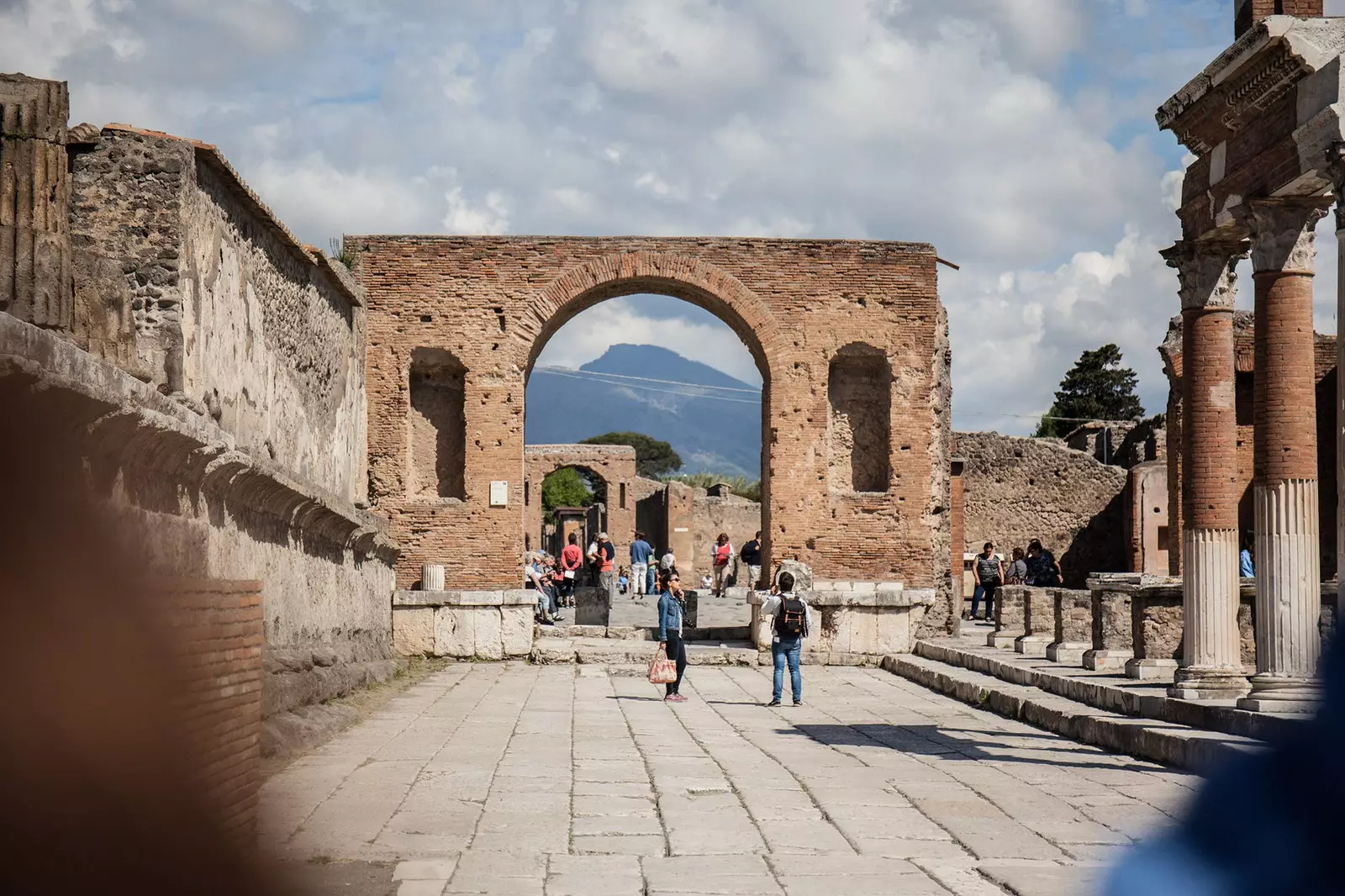
A guide to moving between digs
Herculaneum and Pompeii, Pompeii and Herculaneum, two great Roman cities that remained buried for almost 17 centuries.
Much has been discussed about whether It is worth visiting both or with one we already get an idea of life in the old empire. As always, in the variety is the taste and in the taste, the variety. So, leaving aside the preferences of each one, we will say yes. Absolutely yes. Both cities offer different visions. Both will contribute their own.
The time to spend on each visit will depend on the length of our trip to Campania, Amalfi Coast, Naples or wherever we are.
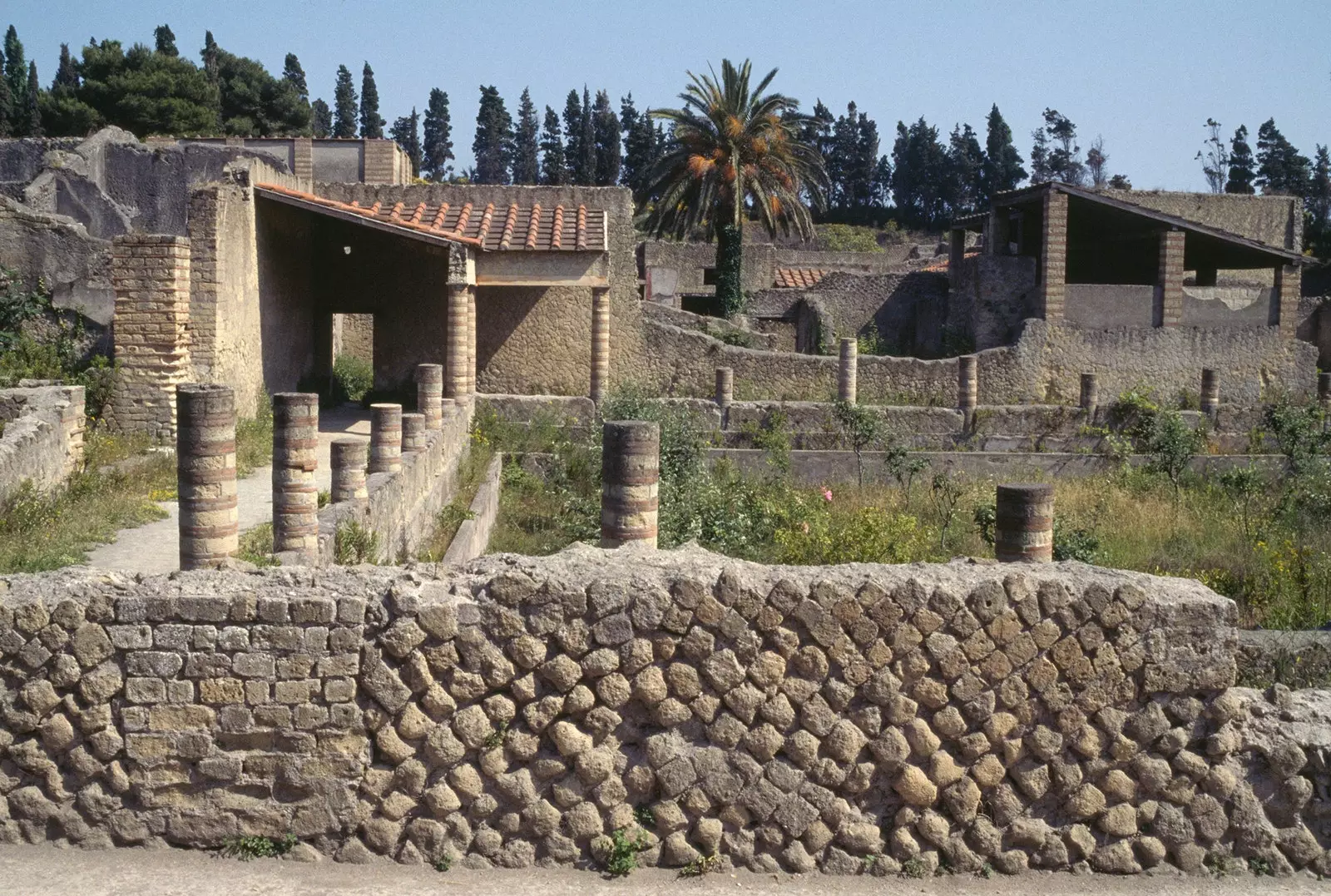
Herculaneum was buried by the eruption of Vesuvius on August 24, 79 AD. c.
If we are going to have more than one day to visit the excavations, then the ideal is to spend a whole day in Pompeii and a morning in Herculaneum. If not, and we only have one day to dedicate to both, then It will be time to be efficient and carry everything planned. Here we make you a proposal.
We assume that your visit will start in Naples, otherwise you would have to find the necessary means of transport to arrive at 08.30 hours to Herculaneum. If you leave from the capital of Campania, it is best to be on the platform around 07:45 am waiting for the train.
You have to be prepared with hat, sunscreen, low shoes, comfortable clothes and plenty of water, So the day will be hard. The journey to Herculaneum it takes about 20 minutes and usually go quite full of tourists heading to the two ancient cities. So early, there are still no big crowds, because Pompeii does not open until 09:00.
Arriving at Ercolano-Scavi, We will go down the street from the station to the sea, where we will come across the site. If we turn around we will see Vesuvius rise. The ticket price is 13 euros.
Herculaneum was a small city, with approximately 4,000 inhabitants, which was buried by the eruption of vesuvius August 24, 79 AD c.
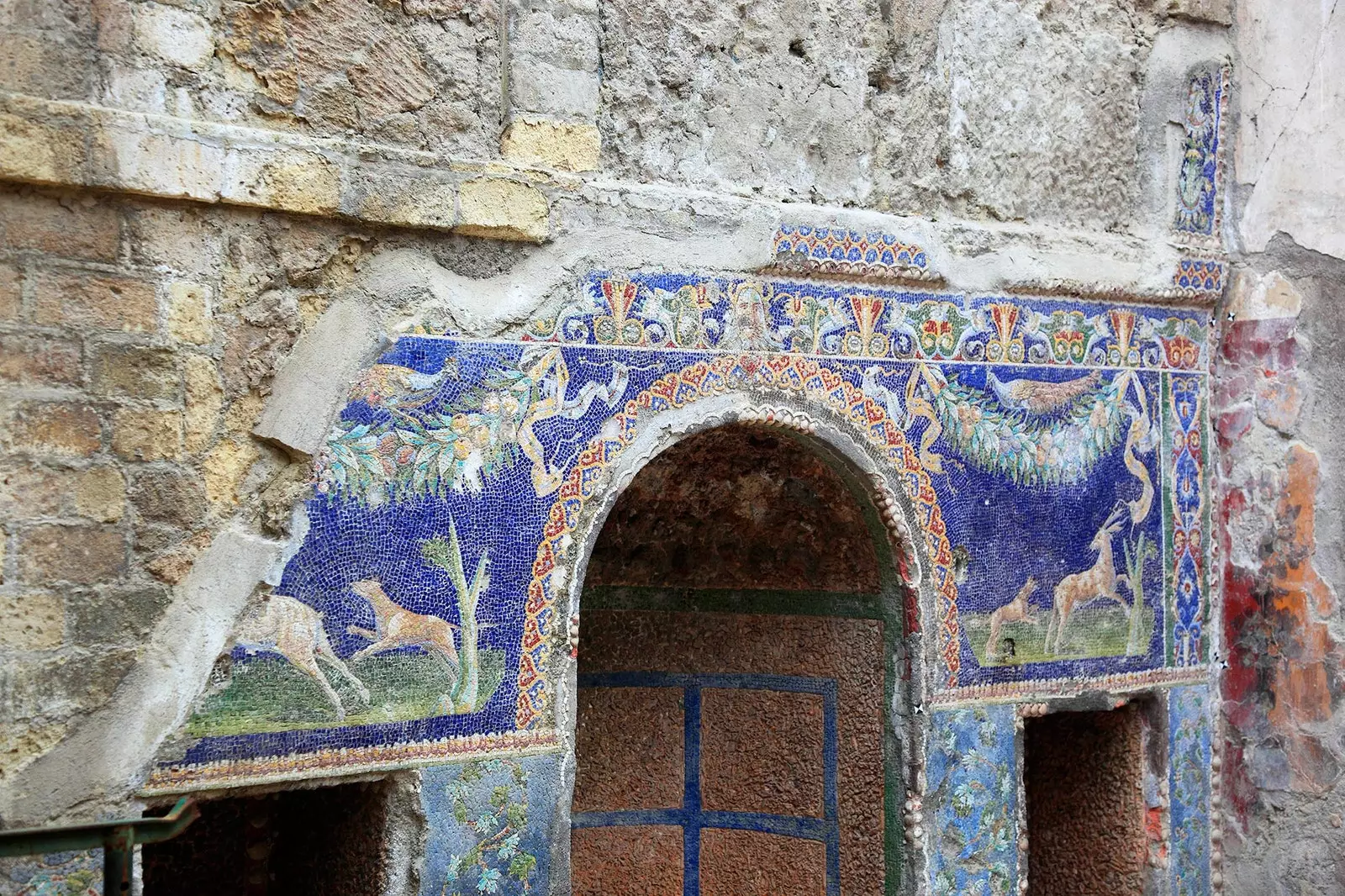
In Herculaneum, the level of conservation is higher than in its neighbor Pompeii
The pyroclastic rivers that buried the city up to more than 16 meters deep were the cause of a conservation superior to that of neighboring Pompeii. Not only have they been preserved the second floors of many buildings but also organic remains can be found such as fabrics, vegetables and even the wood of furniture and some buildings.
It is recommended to take a audio guide, although it is not essential. At the entrance we can take a plan and one Little guide to Herculaneum which turns out to be quite complete for our visit and where all the elements of the map are numbered. These are the ones that we will put in parentheses.
In the about four hours that we will be walking through Herculaneum we will have enough time to see everything. We could only be prevented by the fact that we stop at each building to read and enjoy the smallest detail. Which, by the way, is easy to happen, so you are warned.
In case we are late, we leave you here the essentials: the Fornicis (1) , the suburban hot springs (3) , the bas-relief house of Telephus (7) , the great tavern (10) , the house of the Grand Portal (14) , the sex's bakery Patulcus Felix (15) , the Tuscan colonnade house (21), the House of the two Atriums (25) , the Men's Baths (26) , the Women's hot springs (27) , the house of Neptune and Amphitrite, (29) , the grocery, (30) , the Mosaic Atrium House (33) , the wooden partition house (36) .
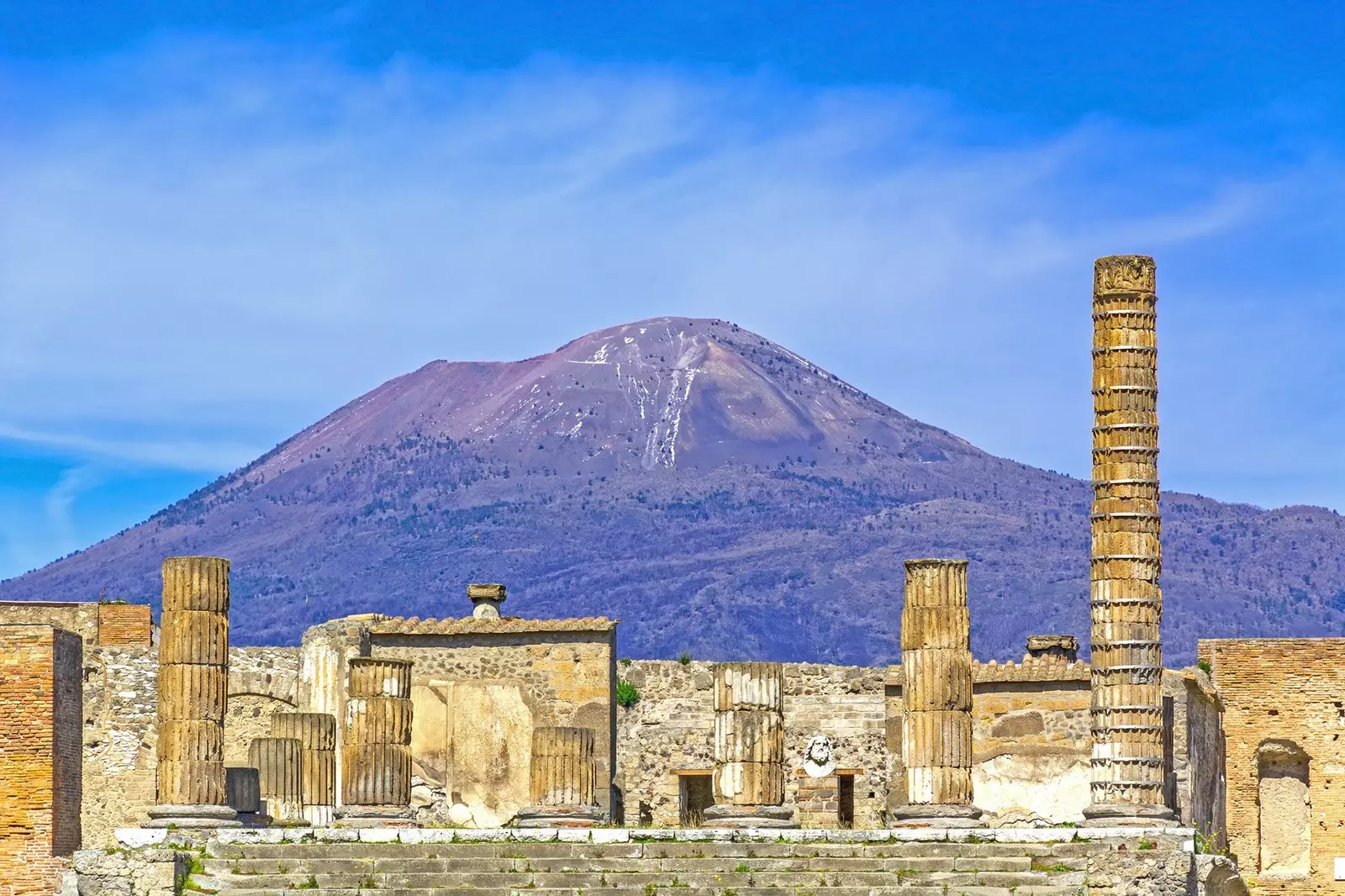
The imposing Vesuvius with Pompeii at the foot
After four hours of walking around the ancient city of Herculaneum, around 12:30 - 1:00 p.m., we should start to get hungry. Depending on how we handle the roaring of our guts, we can choose between eat before in the same town or do it near Pompeii.
In the first case, we advise you to avoid all those restaurants where, when passing in front of them, the waiters or waitresses delight us with an embarrassing dance at the same time that they show us the menu. No kidding, it can happen in quite a few establishments. A very decent place that does not deviate from Via IV Novembre -the one that leads us to the station- is the Luna Caprese Restaurant, which is located at number 68.
In the event that you prefer to do some time and eat when you arrive at Pompeii, it will be very difficult to avoid the most touristic places. The train will take us to the Pompei Scavi stop in just 15 minutes. It is convenient to find out before the schedules, although the frequency is high.
If we have not entertained too much between the journey and the food, we should be around 2:00 p.m. - 2:30 p.m. queuing -because there will be- to buy tickets. Here the price is 15 euros and it is recommended to take an audio guide if you do not go prepared with a guide or the planned itinerary.
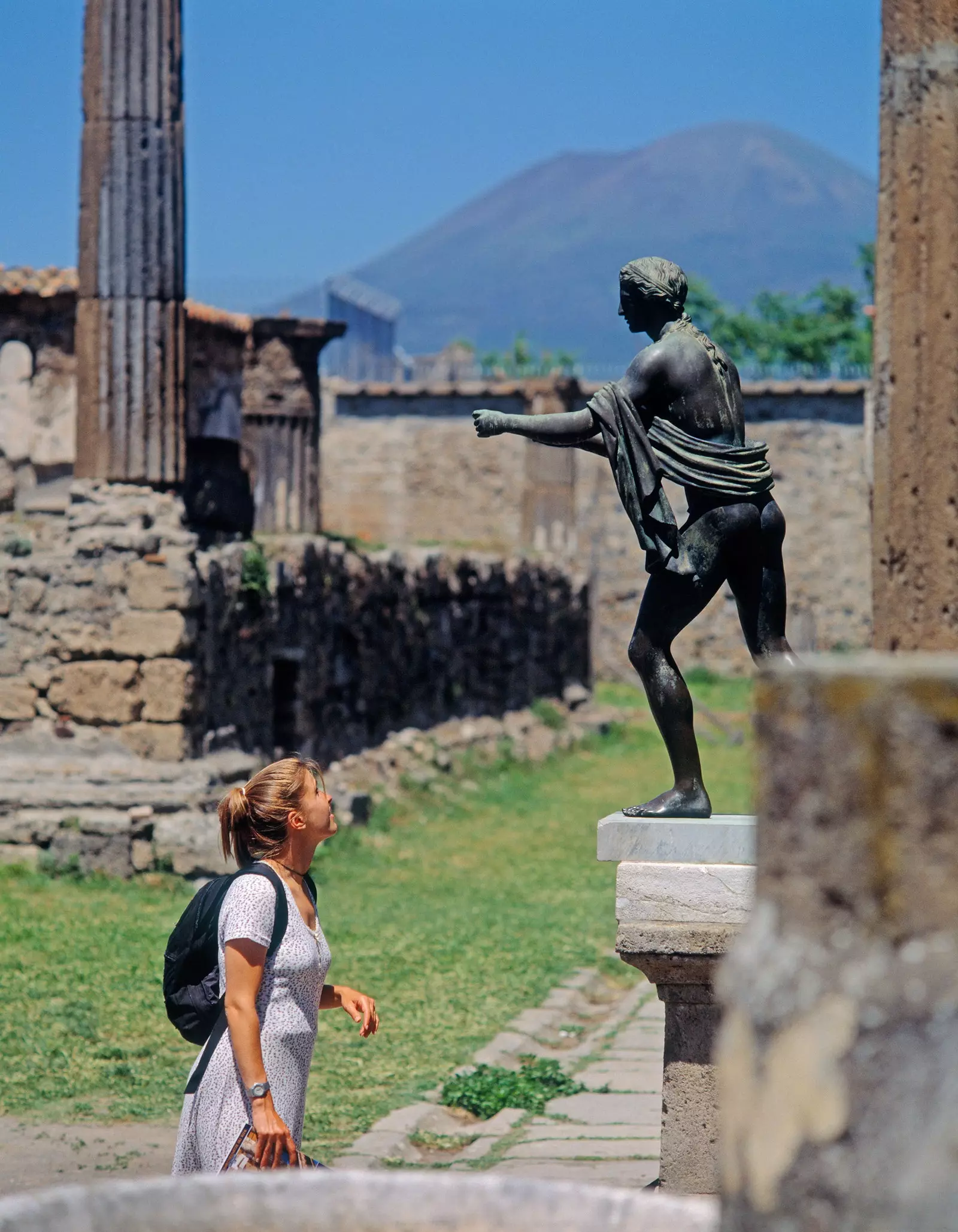
In Pompeii, its Roman city structure stands out
Pompeii it is much larger than Herculaneum and -despite not being so extraordinarily preserved- it stands out its Roman city structure, with its forum, its amphitheater, its wheel-marked streets, its elevated pedestrian crossings...
The closest entrance to the train station is Marine Porthole . We advise you to download the Pompeii map and guide in advance. Mainly for two reasons. The guide, despite being very complete, is not usually given away as in Herculaneum. The map, it breaks, it shatters. So, if we want it to last all five hours, we will have to take two to get the new one out when the first one breaks. The most comfortable thing is to download everything, even if we take a physical plane.
Although we can see many more buildings, we indicate here the most important of each of the neighborhoods:
Regius I: House of the Citarista (1) , House of Casca Longus (2) , House of the Meander (7) , Orchard of the Fugitives (14)
Regal II: House of Octavius Quartio (1), House of the Venus de la Concha (2), Amphitheater (5)
Regal III: House of Trebio Valente (1) Regio V: House of Marco Lucrecio Frontone (2), House of Cecilio Gicondo (4)
Regius VI : House of the Faun (1), House of the Anchor (2), House of the Furnace (7), House of the Golden Cupids (12), House of Apollo (17), Villa of the Mysteries (22)
Reggio VII: Forum (5) , Forum Baths (10) , Macellm (12) , Stabian Baths (16) , Lupanar (18) , Popidio Priscus Bakery (19)
Reggio VIII: Basilica (2), House of the Red Walls (6), Samnite Gymnasium (9), Large Theater (10), Quadrangle of Theaters (11), Small Theater (12)
Regius IX: Central Baths (2), House of Obellio Frimo (3)
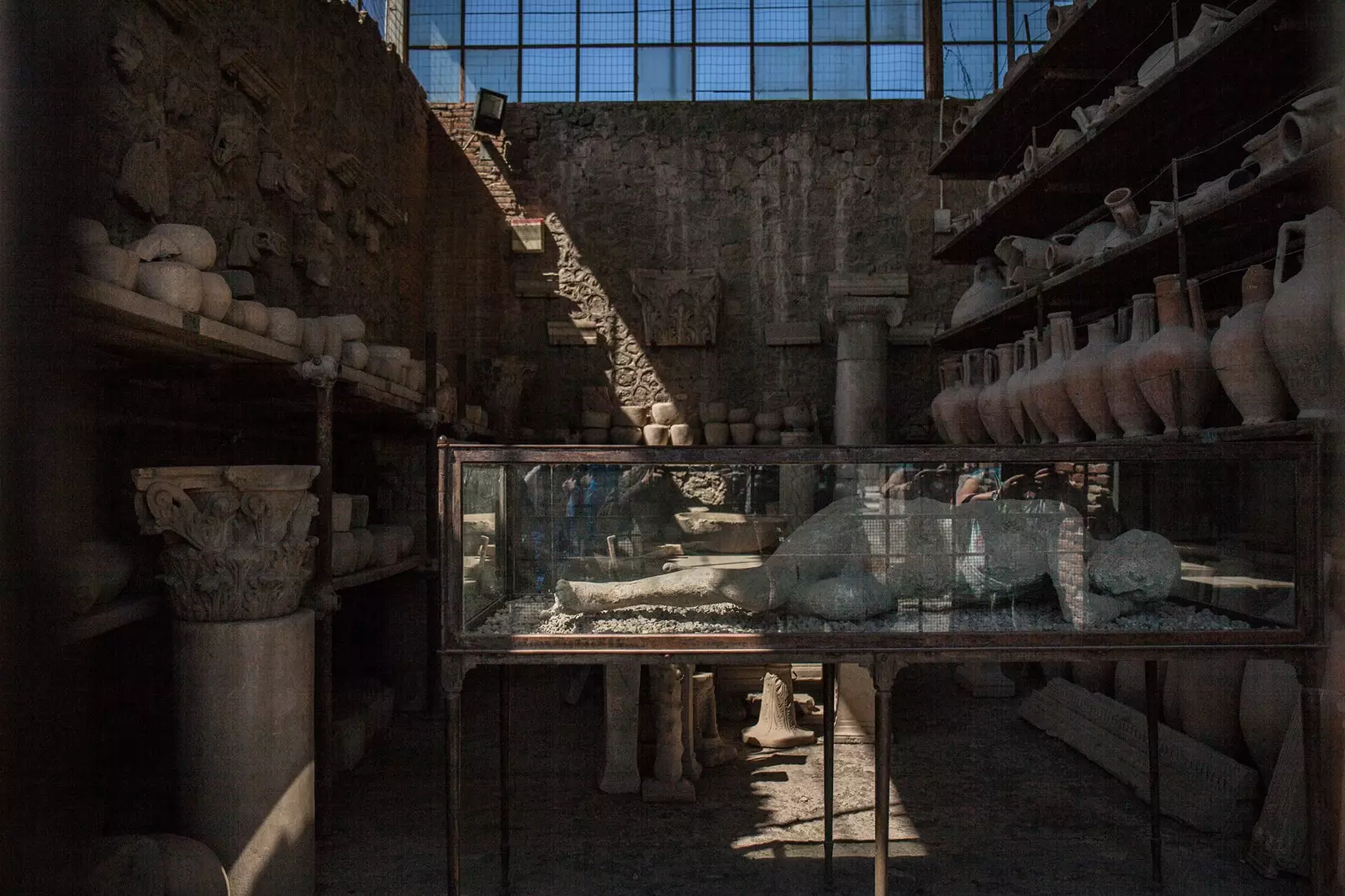
The eruption wiped out (virtually) everything
